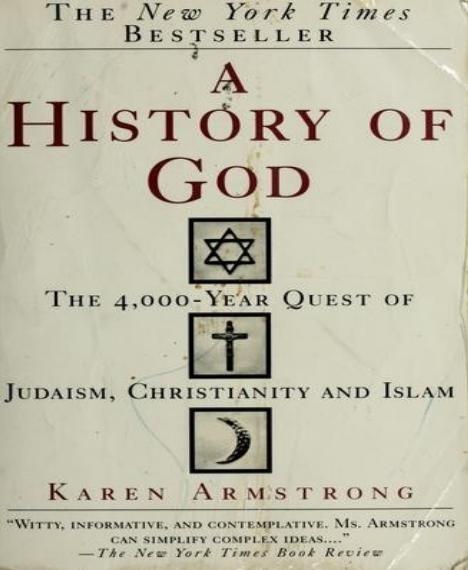A History of God by Karen Armstrong

Author:Karen Armstrong
Language: eng
Format: mobi, epub, pdf
Tags: Christian Rituals & Practice - General, Judaism - Doctrines - History, Religion, God (Christianity), Biblical teaching, God (Islam) - History of doctrines, God - History of doctrines, god, Comparative studies, God (Judaism), Faith, God (Judaism) - History of doctrines, Judaism, God - Biblical teaching, Islam - Doctrines - History, Religion - Commentaries, History of doctrines, History, Reference, Christian Rituals & Practice, General, Comparative Religion, God (Islam), Islam
ISBN: 9780345384560
Publisher: Random House, Inc.
Published: 1994-08-15T07:00:00+00:00
The Tree of the Sefiroth
Some Kabbalists saw the
sefiroth as the limbs of primordial
man as originally intended by God.
This was what the Bible had meant
when it said that man had been
created in God's image: the
mundane
reality
here
below
corresponded to an archetypal
reality in the heavenly world. The
images of God as a tree or as a man
were imaginative depictions of a
reality
that
defied
rational
formulation. The Kabbalists were
not antagonistic towards Falsafah -
many of them revered figures like
Saadia Gaon and Maimonides - but
they
found
symbolism
and
mythology more satisfying than
metaphysics for penetrating the
mystery of God.
The
most
influential
Kabbalistic text was The Zohar,
which was probably written in
about 1275 by the Spanish mystic
Moses of Leon. As a young man, he
had studied Maimonides but had
gradually felt the attraction of
mysticism and the esoteric tradition
of Kabbalah. The Zohar (The Book
of Splendour) is a sort of mystical
novel, which depicts the third-
century Talmudist Simeon ben
Yohai wandering round Palestine
with his son Eliezar, talking to his
disciples about God, nature and
human life. There is no clear
structure
and
no
systematic
development of theme or ideas.
Such an approach would be alien to
the spirit of The Zohar, whose God
resists any neat system of thought.
Like Ibn al-Arabi, Moses of Leon
believed that God gives each mystic
a unique and personal revelation, so
there is no limit to the way the
Torah can be interpreted: as the
Kabbalist progresses, layer upon
layer of significance is revealed.
The Zohar shows the mysterious
emanation of the ten sefiroth as a
process whereby the impersonal En
Sof becomes a personality. In the
three highest sefiroth - Kether,
Hokhmah and Binah - when, as it
were, En Sof has only just 'decided'
to express himself, the divine
reality is called 'he'. As 'he'
descends
through
the
middle
sefiroth - Hesed, Din, Tifereth,
Netsah, Hod and Yesod - 'he'
becomes 'you'. Finally, when God
becomes present in the world in the
Shekinah, 'he' calls himself'!'. It is at
this point, where God has, as it
were, become an individual and his
self-expression is complete, that
man can begin his mystical journey.
Once the mystic has acquired an
understanding of his own deepest
self, he becomes aware of the
Presence of God within him and can
then ascend to the more impersonal
higher spheres, transcending the
limits of personality and egotism. It
is a return to the unimaginable
Source of our being and the hidden
world of uncreated reality. In this
mystical perspective, our world of
sense impression is simply the last
and outermost shell of the divine
reality.
In Kabbalah, as in Sufism, the
doctrine of the creation is not really
concerned with the physical origins
of the universe. The Zohar sees the
Genesis account as a symbolic
version of a crisis within En Sof,
which causes the Godhead to break
out
of
Its
unfathomable
introspection and reveal Itself. As
The Zohar says:
In the beginning, when
the will of the King began to
take effect, he engraved signs
into the divine aura. A dark
flame sprang forth from the
innermost recesses of En Sof,
like a fog which forms out of
the formless, enclosed in the
ring of this aura, neither
white nor black, red nor
green and of no colour
whatever. {55}
In Genesis, God's first creative
word had been: 'Let there be light!'
In The Zohar's commentary on
Genesis (called Bereshit in Hebrew
after its opening word: 'in the
beginning') this 'dark flame' is the
first sefirah: Kether Elyon, the
Supreme Crown of Divinity. It has
no colour or form: other Kabbalists
prefer to call it Nothing (ayin). The
highest form of divinity that the
human mind can
Download
A History of God by Karen Armstrong.epub
A History of God by Karen Armstrong.pdf
This site does not store any files on its server. We only index and link to content provided by other sites. Please contact the content providers to delete copyright contents if any and email us, we'll remove relevant links or contents immediately.
The Lost Art of Listening by Michael P. Nichols(6472)
Why I Am Not A Calvinist by Dr. Peter S. Ruckman(3770)
The Rosicrucians by Christopher McIntosh(3049)
Wicca: a guide for the solitary practitioner by Scott Cunningham(2704)
Signature in the Cell: DNA and the Evidence for Intelligent Design by Stephen C. Meyer(2501)
Real Sex by Lauren F. Winner(2474)
The Holy Spirit by Billy Graham(2418)
To Light a Sacred Flame by Silver RavenWolf(2353)
The End of Faith by Sam Harris(2289)
The Gnostic Gospels by Pagels Elaine(2026)
Nine Parts of Desire by Geraldine Brooks(2007)
Waking Up by Sam Harris(1958)
Heavens on Earth by Michael Shermer(1955)
Devil, The by Almond Philip C(1899)
Jesus by Paul Johnson(1887)
The God delusion by Richard Dawkins(1848)
Kundalini by Gopi Krishna(1824)
Chosen by God by R. C. Sproul(1760)
The Nature of Consciousness by Rupert Spira(1689)
